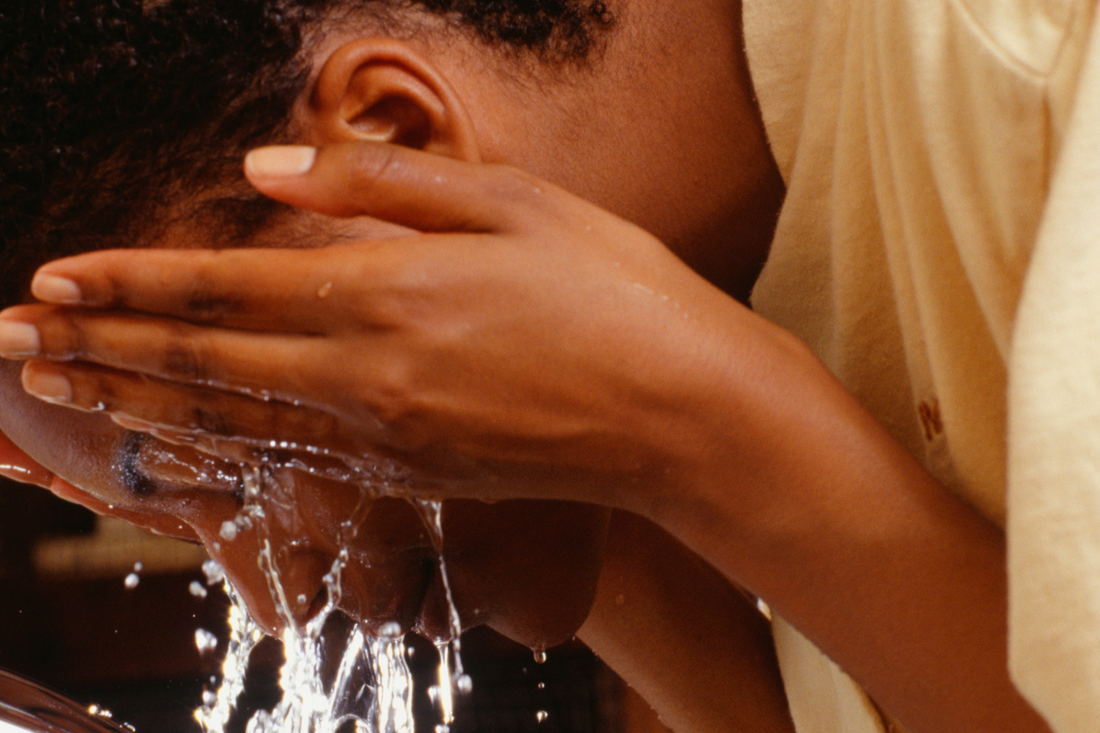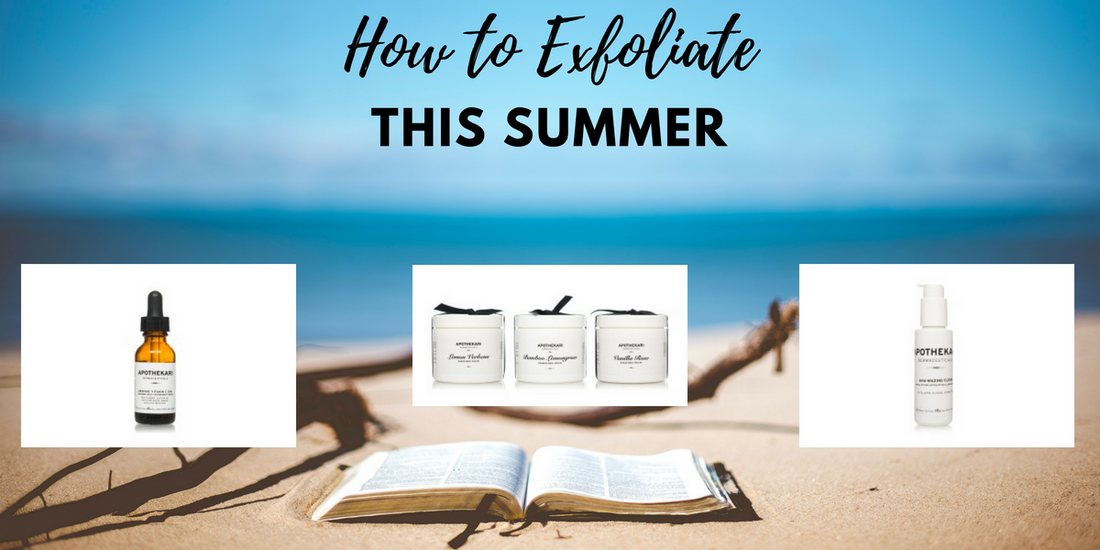Blog
An Exfoliating Face Cleanser for Summer
Our exfoliating face cleanser, Apothekari AHA-Mazing Clean Exfoliating Cleansing Gel, is ideal not only for summer, but year round. Regular use will help to keep skin feeling soft and smooth. And, we may be slightly biased, but we have to confess that we are quite partial to its refreshing and soothing mint scent! Shop Aha-Mazing Clean Gel Cleanser Exfoliation is the process of removing dead skin cells from the outer layer of your skin. A build up of these cells can leave skin looking flaky, dry and even more wrinkled. They can also interfere with the absorption of active ingredients that you apply after. For these reasons, it’s important to remove these skin cells and an exfoliating face cleanser can help. Most skin types benefit from exfoliation if it’s done properly. However, certain skin types, such as sensitive skin, may not be able to tolerate products that exfoliate. In this case, it’s important to do a patch test first to avoid unpleasant side effects such as stinging, burning, redness or irritation. Two Ways To Exfoliate There are two main ways to exfoliate skin at home – mechanically or chemically. Both are safe and effective, and it really comes down to a matter of preference. Mechanical exfoliation involves the use of a tool such as a brush, a sponge or a scrub to help remove the dead skin cells. Chemical exfoliation relies on the use of chemicals such as alpha hydroxy acids (AHAs) – found in Apothekari AHA-Amazing Clean Cleansing Gel, a beta hydroxy acid (BHA like salicylic acid) or L-ascorbic acid (a mild exfoliant, found in our Bespoke Vitamin C Serum), which work to gently dissolve the ‘glue’ that holds skin cells together. Experts often recommend chemical exfoliation over mechanical exfoliation because chemical exfoliants don’t penetrate very deeply and the results are not dependent on how you apply. When one mechanically exfoliates, it is possible to apply too much pressure or exfoliate for too long with an increased possibility of damaging or irritating skin. In the case of an exfoliating face cleanser, it is rinsed off, so the risk of over-exfoliating is almost non-existent. Besides using a cleanser, you may also choose to exfoliate chemically with a moisturizer, serum or lotion . Tips to Exfoliate To minimize skin irritation and damage, the following tips may help: Don’t Overdo It. Examine the skincare products you’re currently using, including those that are prescription medications or over the counter treatments, such as other topical acids or retinoids. Go slowly, paying special attention to how skin reacts. If your skin becomes red, irritated or you experience more breakouts, it’s a sign to cut back or spread treatments out. The frequency depends on your skin type and what you are using to exfoliate. Be Gentle. This is especially important if you are using scrubs or tools, which rely on pressure. Aim for small, circular motions, followed by a rinse with warm (never hot) water. If you have open cuts or wounds or skin is sunburned, exfoliating can wait. Moisturize. Skin can be dry after exfoliating so apply a hydrating treatment afterwards to maintain skin’s health. Our Daily Infusion Moisturizer offers gentle and light hydration that is suitable for all skin types. Our Exfoliating Face Cleanser Regular use of AHA-Mazing Clean Cleansing Gel can help to even out skin discolourations, minimize the appearance of wrinkles and fine lines and soften and smooth skin. A triple combination of alpha hydroxy acids maximizes its benefits and because it’s a rinse off product, it is well tolerated by most skin types. Use caution with sensitive skin.
Learn moreHow To Exfoliate This Summer
If you’re after radiant, glowing skin on your face and body, you’ll want to know how to exfoliate. Summer, with its more revealing clothing styles means you need to up your skin care game. In this blog post, we break down the main points about exfoliation ensuring you know how to exfoliate the right way. Our body produces new skin cells about once every 28 days with the process slowing as we age. New skin cells are pushed to the surface, forcing the older ones to the top. Exfoliation is the process of removing the dry, dead skin cells that sit on the skin’s surface. Removing this top layer not only helps to brighten one’s, it also allows topical treatments to absorb better, thereby increasing their efficacy. Exfoliation is important and here’s how to exfoliate this summer, and all year round… How To Exfoliate 1. Mechanical or Chemical Exfoliation? When it comes to choosing how to exfoliate, there are two main routes to choose between. Physical exfoliation relies upon pressure, from a washcloth or a scrub to help whisk away dry skin cells. The skill of the practitioner is important here – rub too hard and you risk going too deep and causing skin irritation. Rub too lightly and you may not achieve any results. Chemical exfoliation, on the other hand, relies on ingredients that help to break the glue that holds skin cells together thereby assisting their removal at the skin’s surface. Chemical exfoliants include ingredients such as alpha hydroxy acids (AHAs), beta hydroxy acids (BHAs) or Vitamin C/L-ascorbic acid (as found in our Bespoke Vitamin C Serum). Serums, toners and moisturizers can contain chemical exfoliating agents. If you prefer a wash off product, a cleanser like our AHA-Mazing Clean Cleanser includes a triple combination of lactic, malic and tartaric acids to deliver softer and smoother skin. Treatments designed for at home use don’t penetrate any deeper than the top layer so there is little risk of damaging skin. For this reason, we tend to recommend sticking with chemical exfoliants for facial use. When it comes to your body, however, the less sensitive skin can usually tolerate mechanical exfoliation. There’s nothing like using a great body scrub in the bath or shower to help deliver soft, smooth legs and arms. Have you tried any one of our body polishes including our Bamboo Lemongrass Foaming Body Polish? 2. Don’t Overdo It When it comes to exfoliation, less is more. Aggressive exfoliation may result in redness, stinging and irritation. The goal is a glow and not a burn! Keep in mind your skin’s sensitivity and consider exfoliating between one to five times a week. If your regimen includes other active treatments such as retinoids or acne products you may want to space them out to avoid damaging skin. 3. When to Skip Exfoliation If your skin is red and inflamed, if you have open cuts or wounds, an infection or a sunburn, hold off. In these cases, the increased skin irritation will do more harm than good. Inflamed skin needs TLC above exfoliation. Wait for skin to heal first and above all, go slowly and be gentle. Beyond delivering softer, smoother and radiant, glowing skin, exfoliation can help to remove ingrown hairs, improve the results of your fake tan (by making it appear less splotchy and more even) and also help to minimize clogged pores/blemishes. Have we convinced you about its importance?
Learn more


